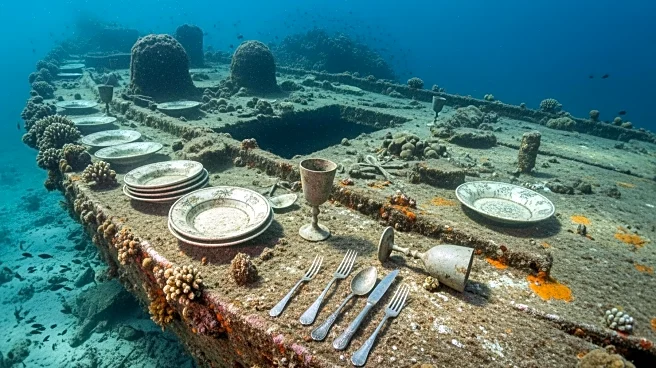What's Happening?
Divers have discovered a 2,000-year-old shipwreck off the coast of Adrasan in Antalya, Turkey, containing ceramic plates, trays, and bowls still arranged in stacks. The shipwreck, dating from the Late
Hellenistic to Early Roman period, offers a rare opportunity to study daily life through ordinary objects. The ceramics, identified as Eastern Sigillata A, were widely traded in the eastern Mediterranean during the first century BCE and CE. The preservation of the tableware provides insights into ancient commerce and dining habits, as well as the maritime heritage of the region.
Why It's Important?
The discovery of the Adrasan shipwreck provides valuable information about ancient trade routes and the spread of cultural practices across the Mediterranean. The intact tableware offers a direct connection to the daily lives of people from two millennia ago, highlighting the importance of standardized goods in commerce. The preservation of the ceramics allows researchers to study manufacturing techniques and trade patterns, contributing to a deeper understanding of historical economies and cultural exchanges.
What's Next?
The artifacts from the shipwreck will be displayed in museums, including the Bodrum Museum of Underwater Archaeology, allowing the public to engage with the region's maritime heritage. Conservation efforts will continue to preserve the ceramics and uncover more details about their production and trade. Researchers may also explore other shipwrecks in the area to build a comprehensive picture of ancient maritime activities and their impact on cultural development.
Beyond the Headlines
The discovery underscores the importance of underwater archaeology in preserving human history and cultural heritage. It highlights the potential for shipwrecks to provide insights into ancient economies and social practices, offering lessons for contemporary discussions on trade and globalization. The findings also emphasize the need for coordinated efforts to protect and study submerged cultural sites, ensuring their preservation for future generations.













